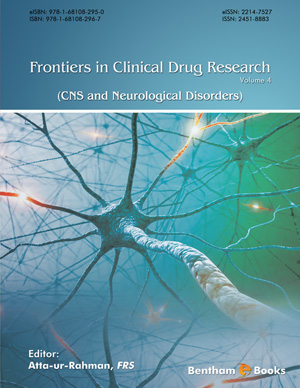Abstract
Alzheimer’s disease (AD) is a multi-faceted neurodegenerative disease. Clinically available treatments, such as cholinesterase inhibitors, are based mainly on the cholinergic hypothesis of AD. These treatments, as well as those targeting the NMDA type of glutamate receptors all provide only a limited therapeutic benefit. The field of AD research has also shifted focus to develop intervention strategies that prevent overt symptoms, such as amyloid plaque deposition and memory loss, in agreement with the more recent amyloid hypothesis of AD. However, to date, all amyloid-directed therapeutics for the treatment of AD have failed, suggesting that additional factors may be involved in the etiology of the disease and mobilizing the search for additional drug targets. By studying the early stages of AD, candidate drug targets (e.g. cytokines or neuronal network activity) have been identified and are now at advanced stages of preclinical development. Throughout this chapter we will focus on two aspects of AD that have garnered widespread attention with respect to future therapeutic intervention strategies. First, a common feature of both mouse models of AD and patients with the disease is hyperexcitability at the level of the synapse as well as neuronal networks. New research is starting to uncover the causes of this hyperexcitability and which cell types are vulnerable, thus, providing attractive therapeutic targets. Second, AD brains are affected by neuroinflammation-like alterations at early stages, which turn into overt neuroinflammation at the late stages. Reducing this activity by targeting the proinflammatory cytokine, tumor necrosis factor-α (TNFα), is thought to be a promising strategy to treat AD. Furthermore, given the cross-talk between the nervous system and the immune system, we hypothesize that the hyperexcitability and progressive induction of neuroinflammation may be related. Here, we summarize studies in both animal models of AD and AD patients related to hyperexcitability and neuroinflammation in the early stages of the disease. Finally, we propose that a combination treatment targeting these factors in addition to the amyloid burden would be a possible way to target more facets of AD.
Keywords: Alzheimer’s disease, Amyloid, Hyperexcitability, Inflammation, Intervention, Prodromal, Synaptic, TNFα.






















